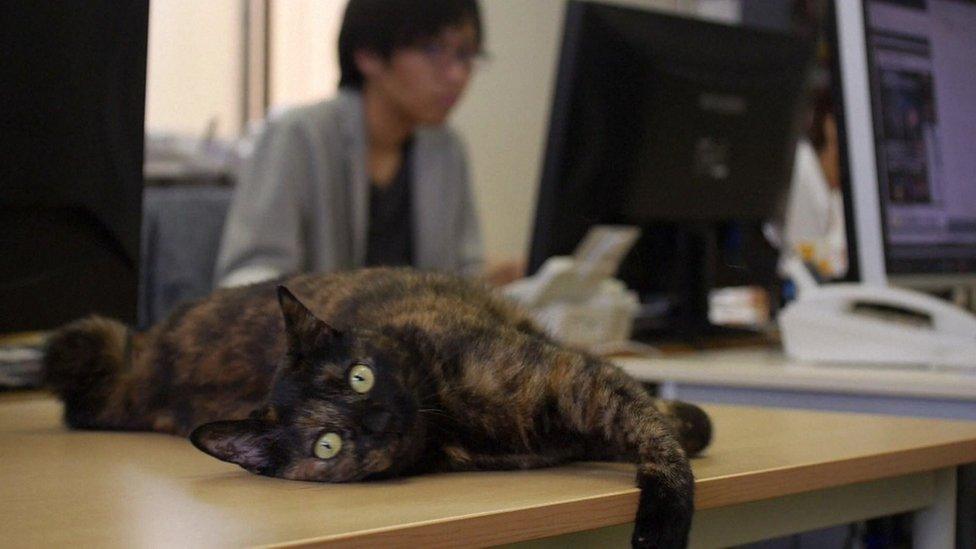Big Cats: What's coming next?
- Published
Meet the stars of BBC One's Big Cats
Last week, many of you tuned in to enjoy BBC One's new nature programme that delves into the world of our beloved feline friends - cats.
Episode two is on its way on Thursday 18 January at 8pm.
But what does it have in store?

Grumpy cat
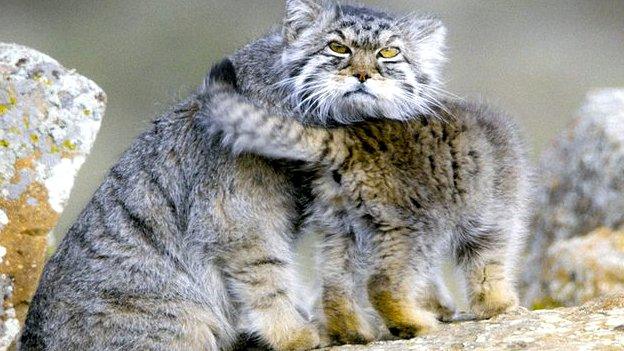
Look at that face!
It is going to be an exciting episode as we will meet one of the world's most secretive cats. Pallas's cats have been filmed for the very first time in the wild.
They live in the remote grasslands of Mongolia - and pull some funny facial expressions!
They're extremely nifty creatures. When they're stalking to catch their prey, they will freeze to look like a rock. They also like to 'periscope' when they're hunting, by popping their heads up to peer over boulders before bobbing back down again.
And guess what? In this episode we're going to meet four little baby ones.
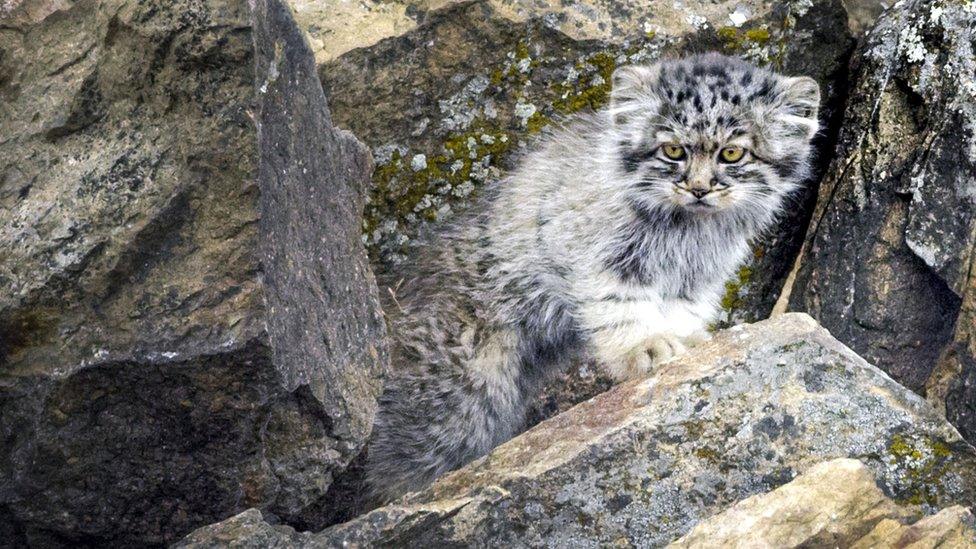
It is the first time that these cats have been filmed in the wild like this
Paul Williams, who worked on the programme, said that being able to capture the cats on camera like they did took "weeks of searching and climbing countless hills".
Camerawoman Sue Gibson said: "To have the chance to film a cat in that environment was something I was very excited about. To be the first camera person [to film Pallas's cats in the wild for television] makes it really rather special."

Swamp cat
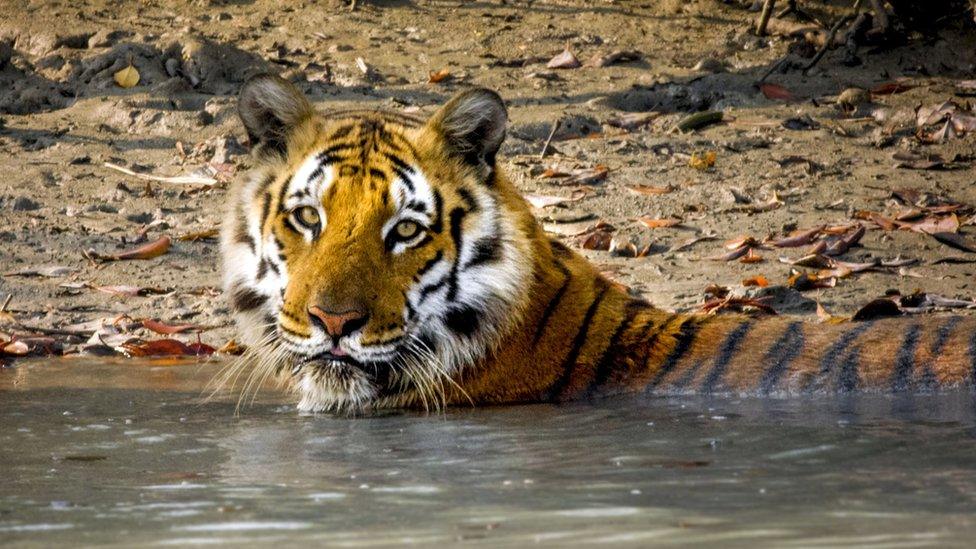
This isn't where you'd usually expect to find a tiger
When you think of a tiger in the wild, where do you imagine it is? Crawling through the jungle? Stalking through trees? We bet you didn't think... in a SWAMP.
Well, brace yourselves, because it's another television-first when we see the elusive and never-before-filmed-in-the-wild-in-India swamp tiger!
The species is found elsewhere in India, but they're only known as swamp tigers when they're in the Indian Sundarban.
Camerman Kalyan Varma and producer Paul Williams spent 600 hours on a specially designed boat in order to track down a swamp tiger to film. These animals are extremely dangerous, so the boat had extra high sides to make sure the crew was safe.

Deadly cat
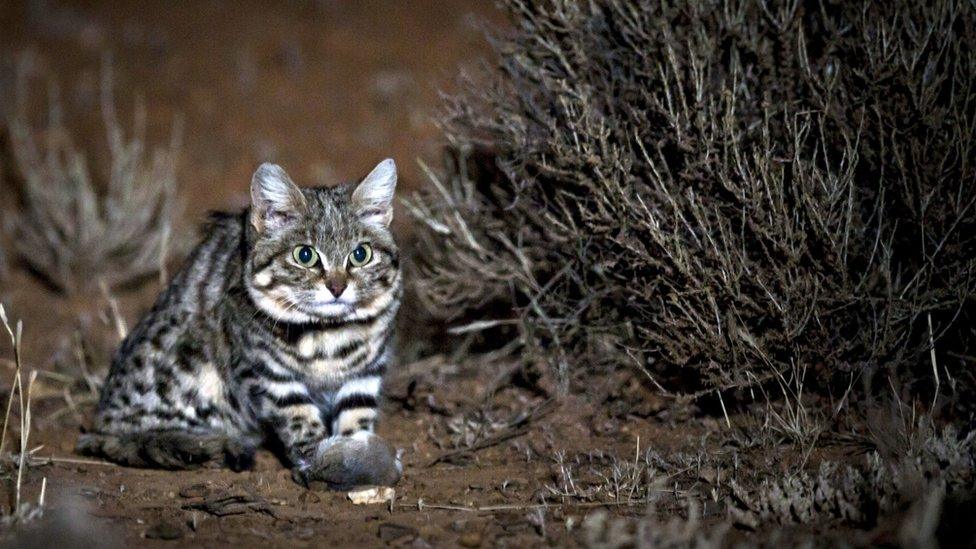
This cat doesn't exactly look like a ruthless killer - but it's actually the most successful hunter out of every single cat species!
If we asked you which of Africa's cats is the most deadly, we would guess that quite a few people would think it is the lion. Maybe a leopard? Cheetah? All wrong.
Africa's deadliest cat is also its smallest. This black-footed cat has the title because when it goes out hunting, it is the most successful hunter out of the entire cat family.
They walk as far as 20 miles a night in search of prey - the furthest recorded for a small cat - and anything that moves is a potential meal, from scorpions to gerbils or birds. Greedy so-and-so!
Scientist Alex Sliwa explains: "Despite their sweet exterior, due to their [small] size, they hunt with deadly precision and tenacity. They are such charismatic little killers, particularly [the cat that we filmed for this episode] with her 'scary eye look'!
"She looks so innocent but then is such a ruthless and efficient killer."

Fishing cat
Ever wanted to see a fishing cat? Of course you have - and there's more to come in Thursday night's episode
If you thought you'd seen it all with a swamp tiger, think again. How about fishing cats? Yes, you heard us, fishing cats.
Cats usually hate water, but these special animals are adapted to hunt in water. They have a special layer in their fur designed to keep them warm, as well as webbed feet and long whiskers to help them detect fish.
In this episode, we will see some young fishing cats learning to hunt in water for the very first time.
"The kittens were more interested in playing with the aquatic plants!" explained producer Paul Williams, as you can see in the video above.
"It was a huge privilege to see how quickly the fishing cats kittens took to the water. They seemed to have an innate ability to swim, and an excitement to play - every day they became braver and more active in the water."
Big Cats is on BBC One at 8pm on Thursday
- Published12 January 2018

- Published10 September 2017

- Published20 May 2017
